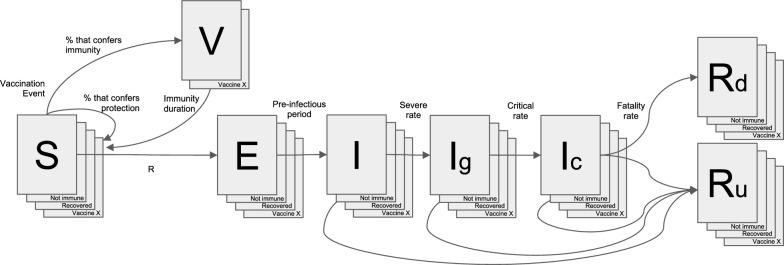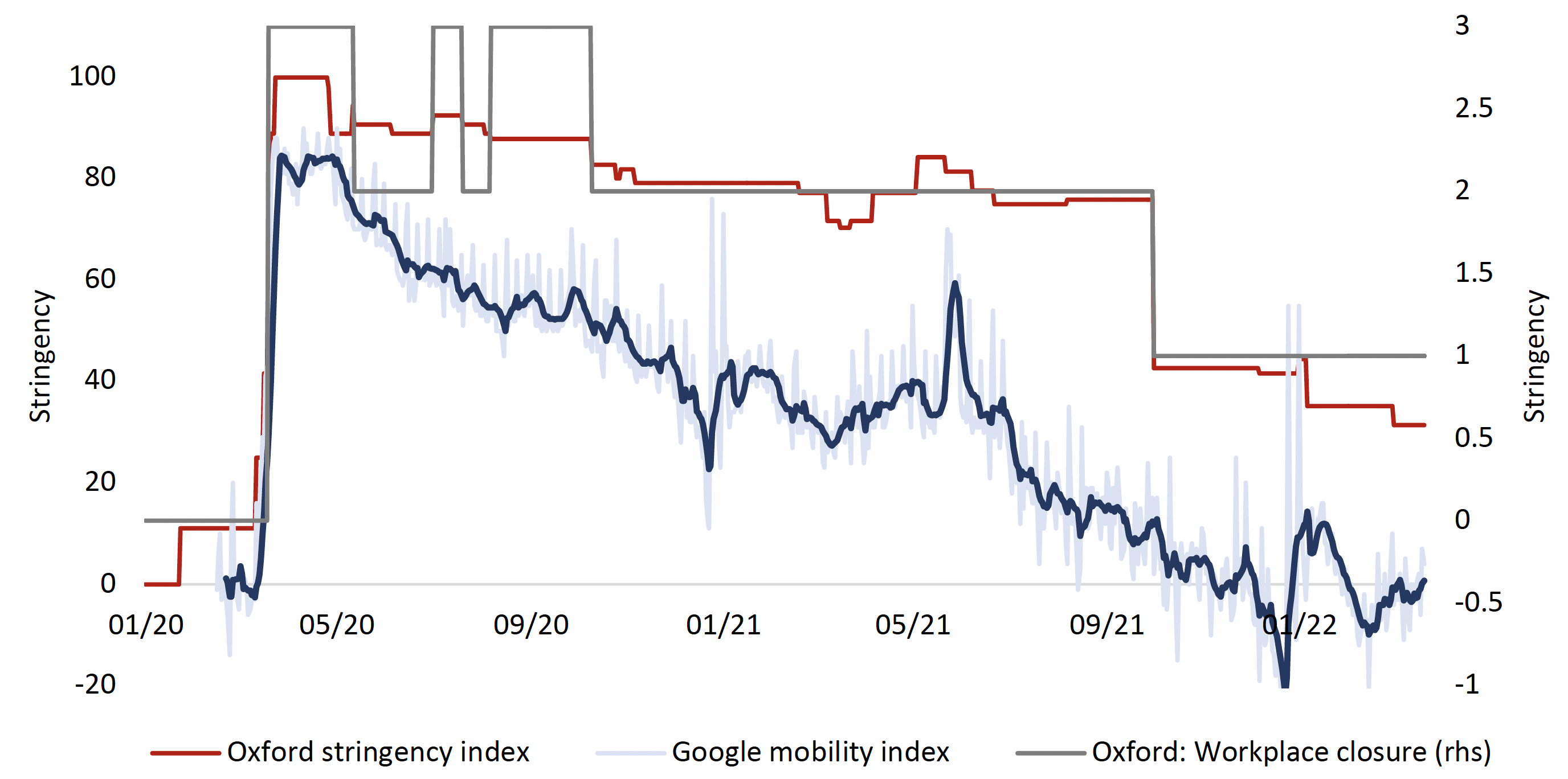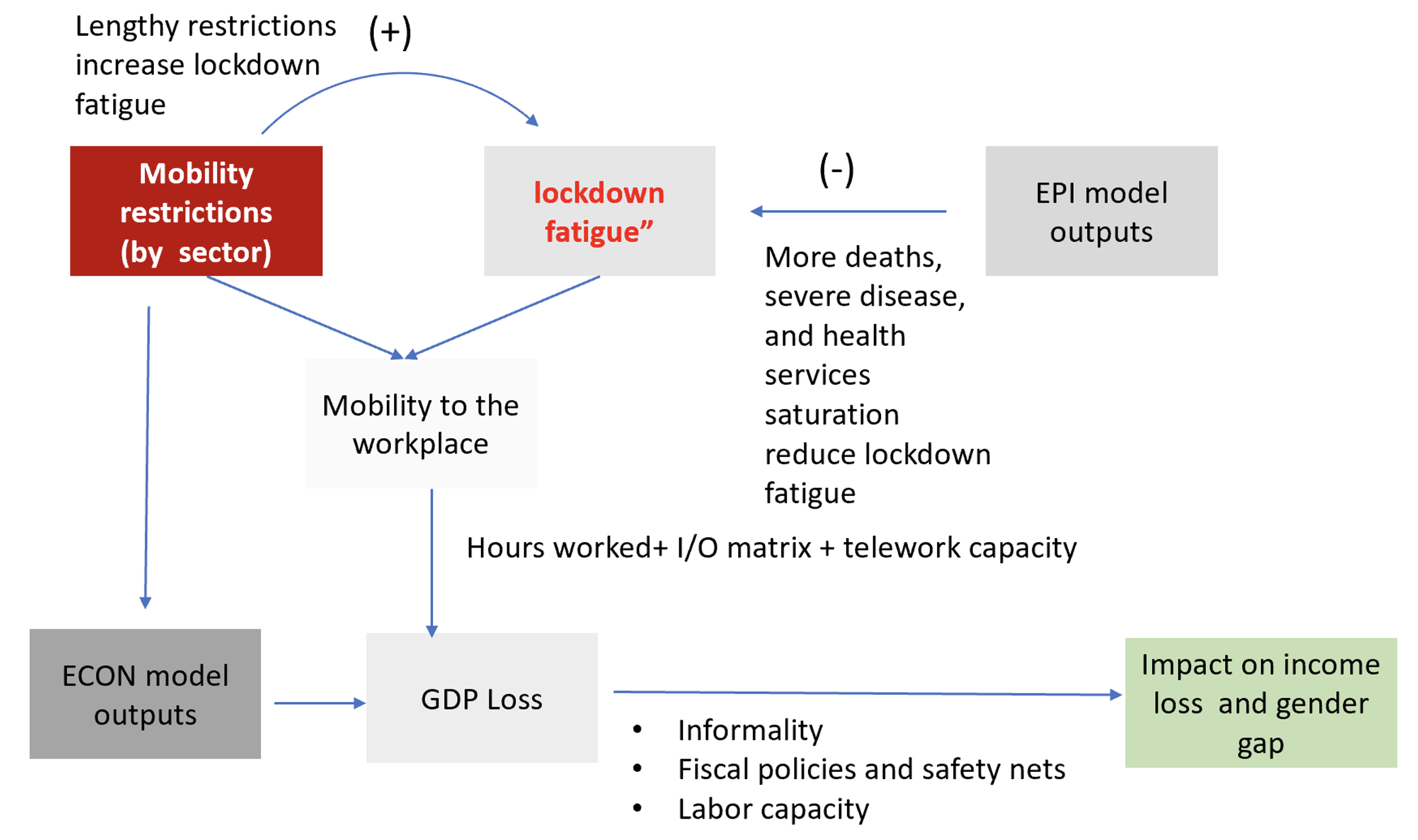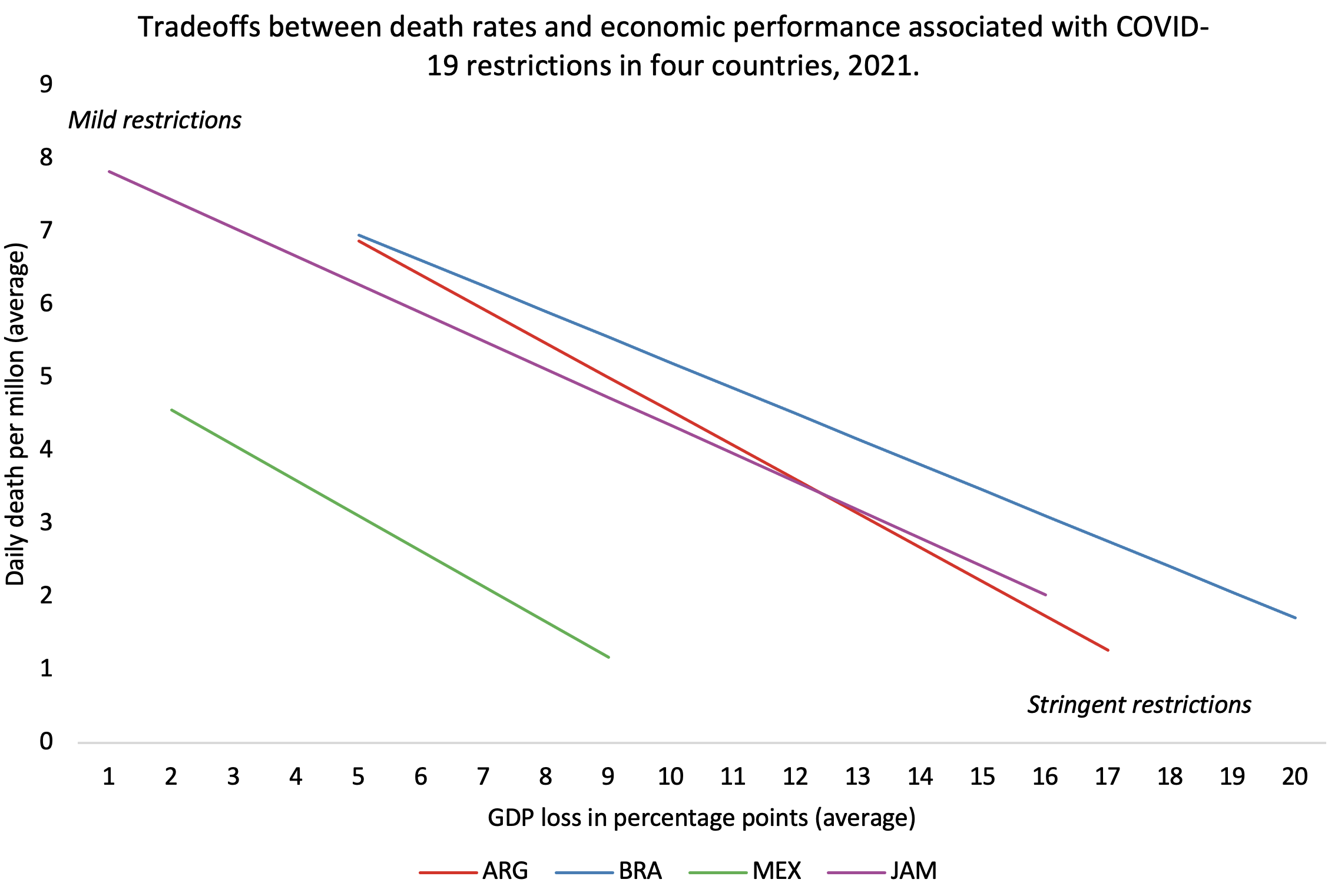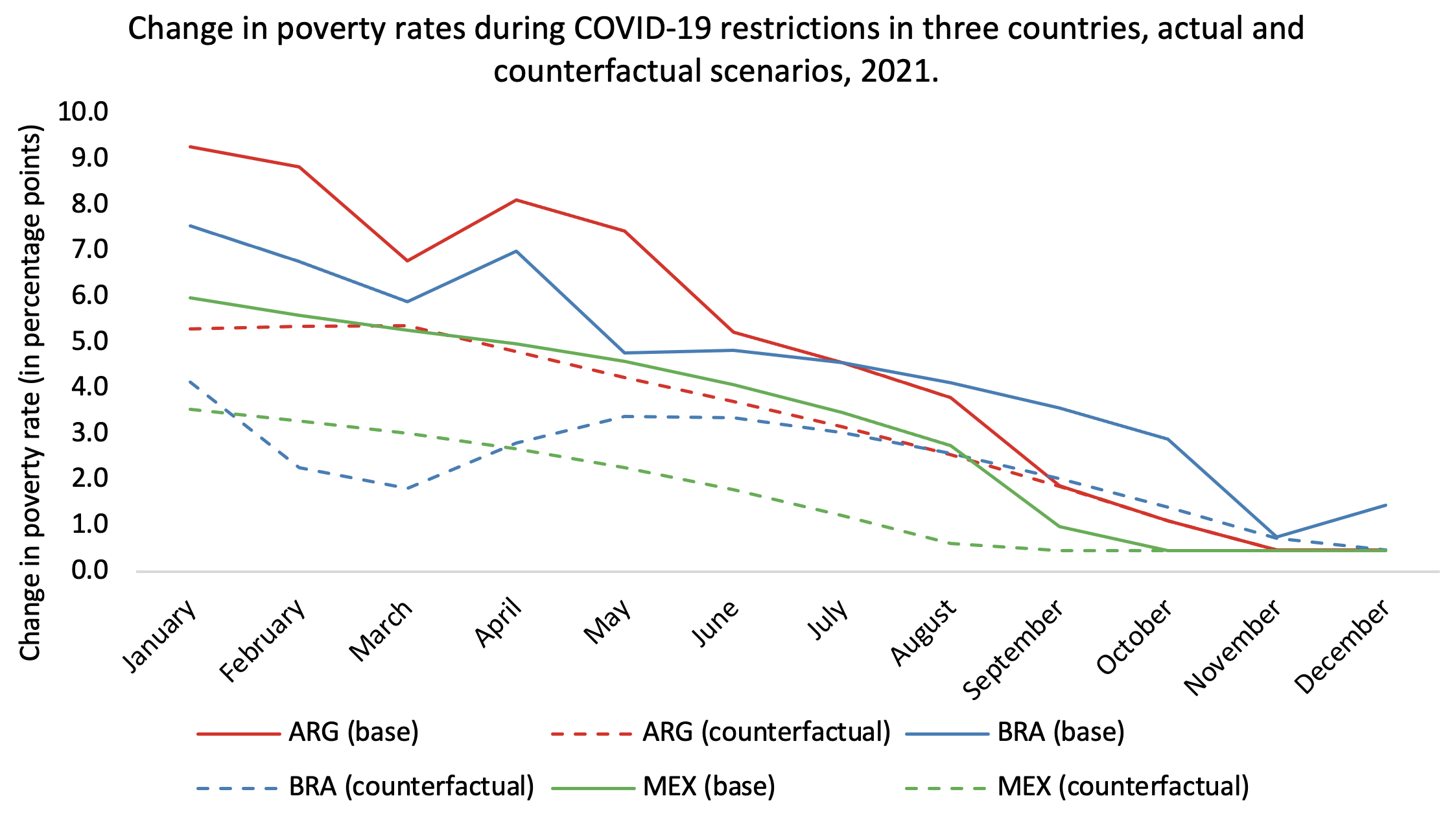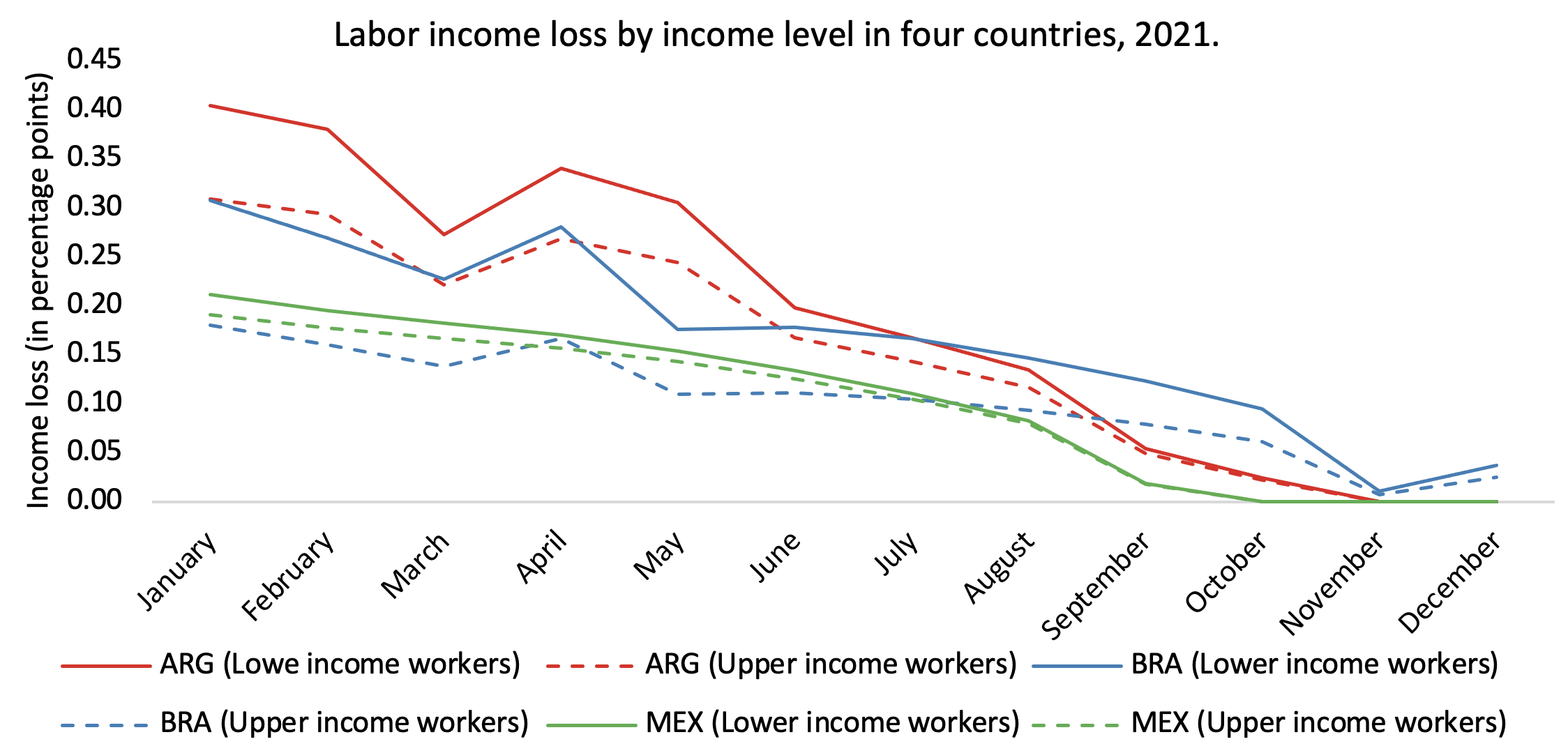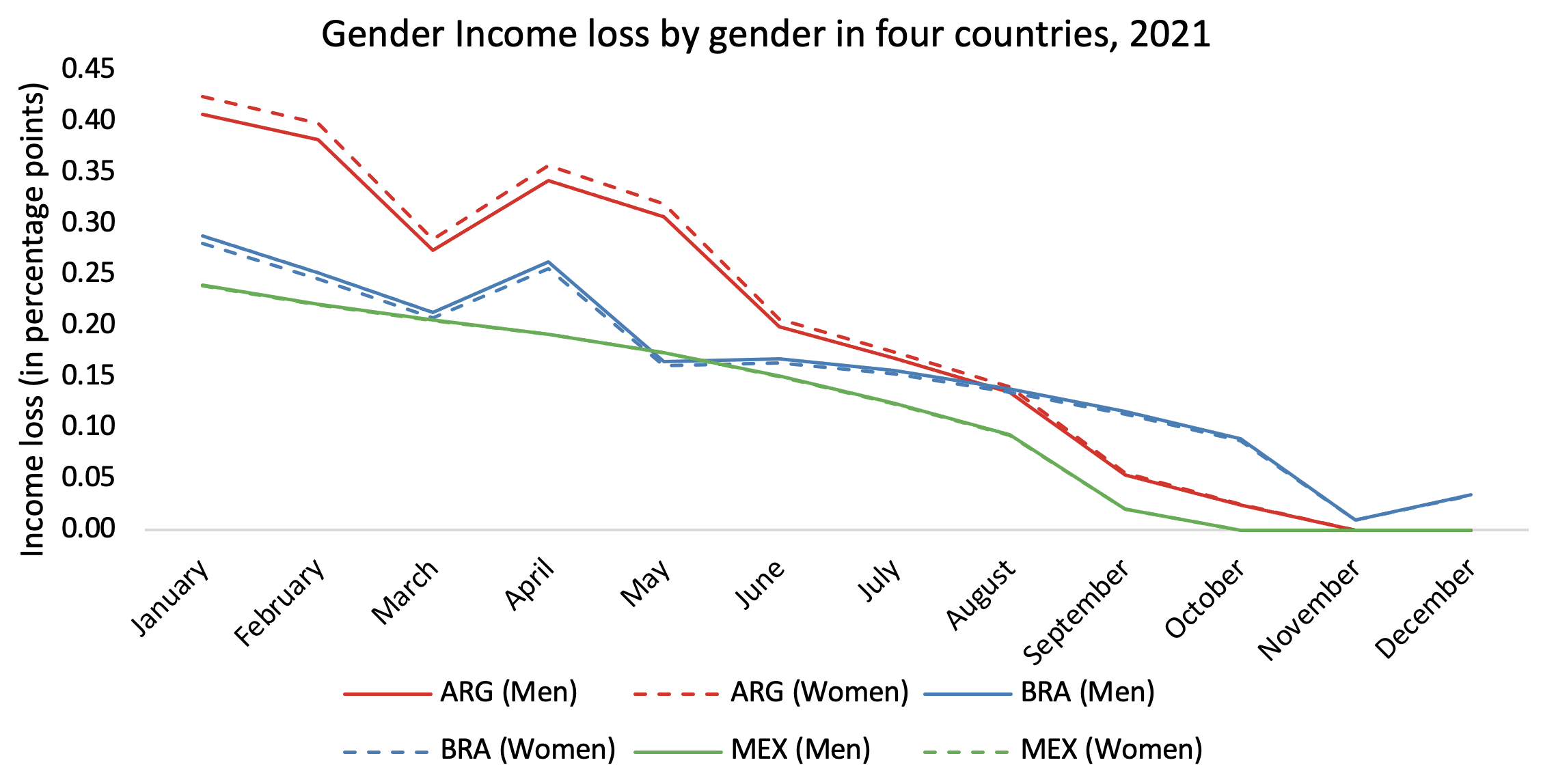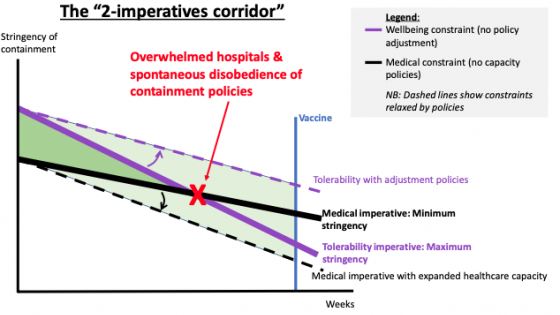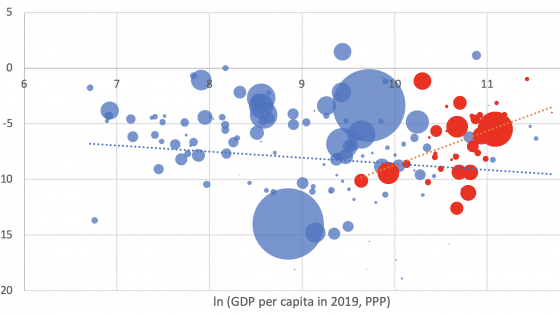Latin America and the Caribbean (LAC) was the region with the highest COVID-19-related death count worldwide (Msemburi et al. 2023), despite implementing stringent public health and social measures (PHSM). At the same time, these policies caused large short-term economic losses by reducing working hours in a sizable fraction of the labour force. In many cases, these short-term costs, mainly in terms of productivity losses and social isolation, were so high that policymakers and individuals were unable to sustain them. This, in turn, triggered a heated and broadly politicised ‘lives vs livelihood’ debate (Rothwell and Makridis 2020, Levy Yeyati and Malamus 2020), with wildly dissimilar government responses across the region despite the recognition that most economic losses in output (Levy Yeyati and Filippini 2021b) and human capital (de La Maisonneuve et al. 2023) were persistent, affecting lives in the long run. Yet, the question remained unanswered: what would have been the economic impact of tighter/looser PHSM?
To address this question, we built an integrated epidemiological-economic (epi-econ) model to evaluate, in hindsight, the epidemiological, economic, and social trade-offs involved in the PHSM decision, and calibrated it to four LAC countries – Argentina, Brazil, Mexico, and Jamaica – in the year with the highest death toll in the region, 2021 (Rubenstein et al. 2023). Our model, available at https://iecs.shinyapps.io/covid-model-v2/, is recursive: the outcome from the epidemiological side block impacts the economic outcomes, and vice versa, by incorporating a novel component: ‘lockdown fatigue’ (Levy Yeyati and Sartorio 2020), that is, the marginal compliance of the PHSM decreases with the stringency/length of the measures, and the drop of the death count (reflecting psychosocial and economic factors).
In line with the DAEDALUS model (Haw et al. 2022), if the policymaker has an ‘economy-focused’ approach, PHSM will ease and the mortality rate will likely increase. On the other hand, if the priority is to curb the case curve (a ‘safety-focused’ approach), the economy will have to endure a highly stringent and lengthy lockdown and a likely sizable decline in GDP. However, the lockdown fatigue limits the capacity of the policymaker to discourage mobility over time, constraining the effectiveness of prolonged PHSM policies.
The model
On the epidemiological side, our model provides a framework in which population dynamics are described in mathematical terms, capturing the number of people in separate compartments and the relationships between those compartments. We use an SVEIR transmission model (Augustovski et al. 2023), augmented with a macroeconomic and social impact model of the PHSM, adjusted for the different vaccination strategies in each country.
Figure 1 The SVEIR transmission model
To improve the transmission dynamics, we incorporate specific age-strata mixing patterns matrices to represent the social interactions and effective contact rates at each of these four settings: home, school, work (including transportation), and community. Modified matrices are derived from a model representing the impact of PHSMs on each stratum (school closures, non-essential business and public transport restrictions, staying at home, shielding the elderly, mandatory masks, etc.)
On the economic side, the model quantifies the GDP loss associated with mobility restrictions, incorporating the interaction of the lockdown measures with the behaviour of the population (‘lockdown fatigue’, estimated as the time-varying degree of compliance with mobility measures).
The main link between the PHSM and the economic impact works through the reduction in working hours. The stringency of the mobility restrictions precludes workers to get to the workplaces, effectively reducing the workings hours and producing an economic loss. We assumed that, prior to the PHSM, workers put an ‘optimal’ amount of hours into work; with PHSM in place, a share of workers is unable to go to their workplaces, reducing economic output (although we account for the fact that some work can be done remotely) and workplace mobility (in turn, viral spread).
In order to quantify the GDP loss, we need a detailed structure of the economic activity of the country, as more labour-intensive economies will be more exposed to mobility restrictions, and more informality in labour intensive sectors will amplify the GDP loss and the need for fiscal support to attenuate the impact of PHSM on the GDP loss. To map the impact of reduced mobility on GDP, we use sectoral value added and labour shares. Moreover, we calibrated incorporated differences in transitioning into remote working across sectors of the economy and countries.
Lockdown fatigue reflects both the increasing psychosocial burden of isolation, including living conditions, and a growing income need, particular taxing for low-income households and informal workers, leading to a decreasing effectiveness of PHSM policies (Levy Yeyati et al. 2021). We estimate a relationship between mobility restrictions and working hours (compliance) that decreases with the cumulative effective length (length adjusted by intensity) of the PHSM, and increases with recent COVID-related deaths (the ‘fear factor’). The results in a non-linear relationship that captures the gap between de-jure and de-facto intensity of mobility restrictions (Figure 2).
Figure 2 Lockdown fatigue: Mobility restriction and de facto reduction
The trade-off
To calibrate the model, we map the sequence of PHSM measures actually implemented at the country level in 2021. This sequence yields both a path for cumulative deaths over the year, and an estimation of the GDP loss. In general, governments imposed stringent measures earlier in 2021 and were able to ease them as the vaccination rates accelerated. These results determine benchmark deaths and GDP losses that are later compared to alternative simulated scenarios.
Figure 3 summarises how the two sides of the model interact. For each decision period, the economic model takes the epidemiological output (number of deaths in the previous seven days) as an input, whereas the epidemiological model takes the economic output (working hours) as an input.
Figure 3 Epi-econ integration
Our primary counterfactual scenario is that governments implement less stringent PHSM measures leading to increased deaths but a more modest GDP loss. Based on these alternative outcomes, we quantify the lives-livelihood trade-off as a ‘sacrifice ratio’: changes in GDP losses and COVID-related deaths when PHSM become less stringent. Naturally, we are not interested in comparing GDP with deaths, but rather in illustrating the short-run trade-offs, its determinants (comparing slopes) and the policy choices in each case (Figure 4). In particular, the slopes highlight disparities among countries. A steeper slope indicates that reducing GDP loss by 1% would result in a more substantial increase in the daily deaths – a difference that emanates from a complex interplay of economic structures, health systems, and previous COVID-19 waves. More generally, the steeper the slope of the trade-off lines, the more challenging the epidemiological-economic trade-offs.
Figure 4 Lives versus livelihoods
Social outcomes
The model also looks into the interaction of PHSM and social indicators. In particular, it illustrates the widening poverty gap as the stringency of PHSM policies soften in the counterfactual scenario, converging as restrictions eased toward the end of 2021 (Figure 5).
Figure 5 Poverty rates
While the difference in the impact between high and low-income workers is not significant (Figure 5), the results suggest a lower exposure among higher-income workers, typically in low contact-intensive occupations or with a greater ability to transition to remote working.
Figure 6 Income gap
Finally, regarding gender disparities, the results somewhat challenge conventional expectations. We find no statistically significant difference between the income loss for both men and women, particularly during the initial stricter PHSM periods – although the simulations do not take into account the incidence of the increased burden of home work within the household.
Figure 7 Gender gap
Conclusion
In navigating the fraught complexities of pandemic response, policymakers face the daunting task of strategic decision-making (Ferranna et al. 2021), particularly in emerging economies where economic losses are expected to be more persistent. Our model, publicly available and customizable, is a powerful tool for policymakers to assess trade-offs in the context of their unique socio-economic landscapes. In particular, the presence of a steep short-term trade-off between health and economics losses emphasises the relevance of targeted pharmaceutical policies, notably increased vaccination coverage.
The model is not intended to pin down an optimal PHSM schedule, a balancing act (Baldwin 2020) that ultimately depends on policy weights that are bound to differ even between policy makers in the same country. Rather, it offers a first insight on the dynamic relationship between PHSM, public behaviour and outcomes in a policy tool that simulates the costs of alternative PHSM programmes and updates them as data becomes available, a first step for better preparedness in the future.
References
Augustovski F, A Bardach, A Santoro, F Rodriguez-Cairoli, A López-Osornio, F Argento, M Havela, A Blumenfeld, J Ballivian, G Solioz and A Capula (2023), “Cost-effectiveness of COVID-19 vaccination in Latin America and the Caribbean: an analysis in Argentina, Brazil, Chile, Colombia, Costa Rica, Mexico, and Peru”, Cost Effective Resource Allocation 21(1): 21.
Baldwin, R (2020), “COVID, remobilisation and the ‘stringency possibility corridor’: Creating wealth while protecting health”, VoxEU.org, April 10.
de la Maisonneuve, C, B Égert and D Turner (2023), “Quantifying the macroeconomic impact of COVID-19-related school closures on human capital”, VoxEU.org, January 24.
Ferrana, M, J P Sevilla and D Bloom (2021), “Alternative value frameworks for assessing Covid-19 pandemic policies”, VoxEU.org, 2 August.
Haw D, P Christen, G Forchini, S Bajaj and K Hauck (2020), “DAEDALUS: An Economic-Epidemiological Model to Optimize Economic Activity While Containing the SARS-CoV-2 Pandemic”, Imperial College London.
Levy Yeyati, E and F Filippini (2021a), “Pandemic divergence: The social and economic costs of Covid-19”, VoxEU.org, May 12.
Levy Yeyati, E and F Filippini (2021b), “Social and Economic Impact of COVID-19”, The Independent Panel for Pandemic Preparedness and Response, Background paper 13.
Levy Yeyati, E and A Malamud (2020). “How to Think About the Lockdown Decision in Latin America”, Americas Quarterly, 2 April.
Levy Yeyati, E and L Sartorio (2020). “Take me out: De facto limits on strict lockdowns in developing countries”, Covid Economics 39(2).
Levy Yeyati, E, L Sartorio and P Goldstein (2021), “Lockdown fatigue: The declining effectiveness of lockdowns”, VoxEU.org, 30 March.
Msemburi W, A Karlinsky, V Knutson, S Aleshin-Guendel, S Chatterji and J Wakefield (2023), “The WHO estimates of excess mortality associated with the COVID-19 pandemic”, Nature 613(7942): 130-137.
Rothwell, J and C Makridis (2020), “The real cost of political polarisation: Evidence from the COVID-19 pandemic, VoxEU.org, 10 July.
Rubinstein, A, F Filippini, A Santoro, E Levy Yeyati, A L López Osornio, A L Bardach, C Cejas, S Bauhoff, F Augustovski, A L Pichon‐Riviere (2023), “Lives Versus Livelihoods: The Epidemiological, Social, And Economic Impact Of COVID-19 In Latin America and The Caribbean”, Health Affairs 42(12).
Santoro A, A L Osornio, I Williams, M Wachs, C Cejas, M Havela, A Bardach, A López, F Augustovski, A Pichón Riviere and A Rubinstein (2022), “Development and application of a dynamic transmission model of health systems’ preparedness and response to COVID-19 in twenty-six Latin American and Caribbean countries”, PLOS Global Public Health 2(3).

